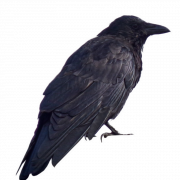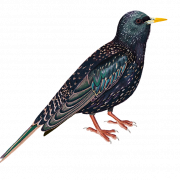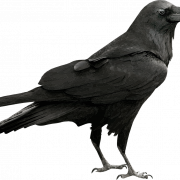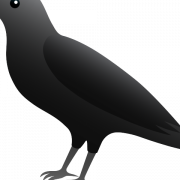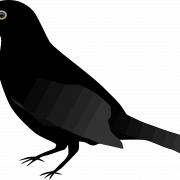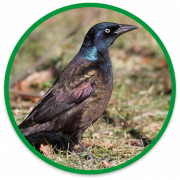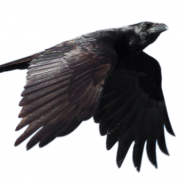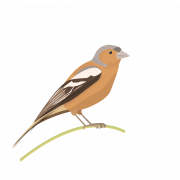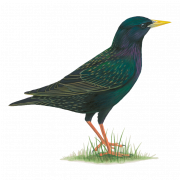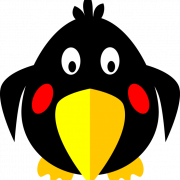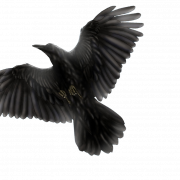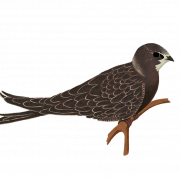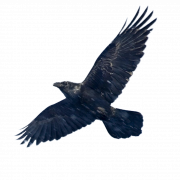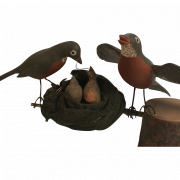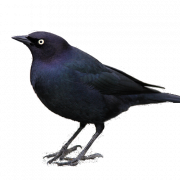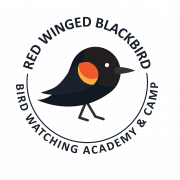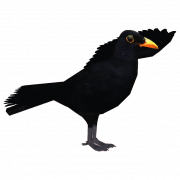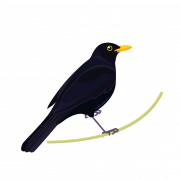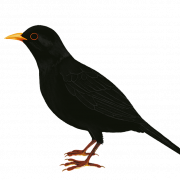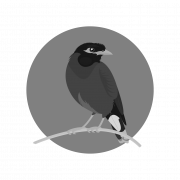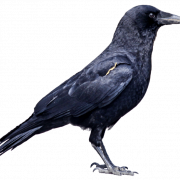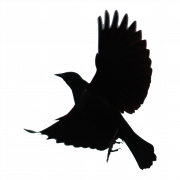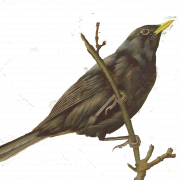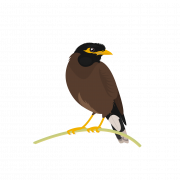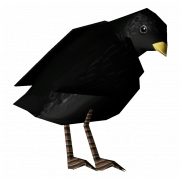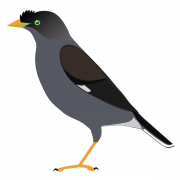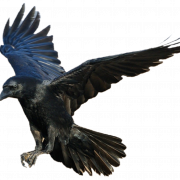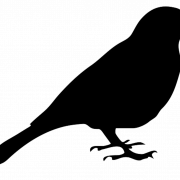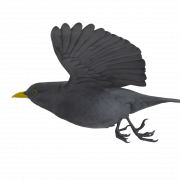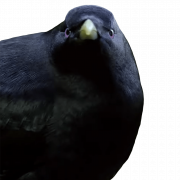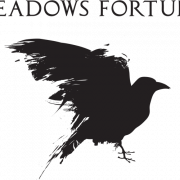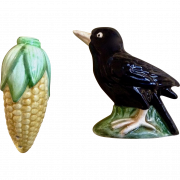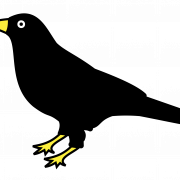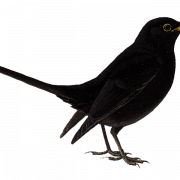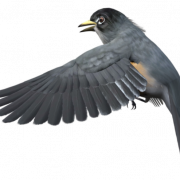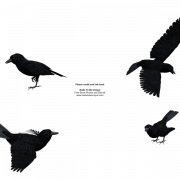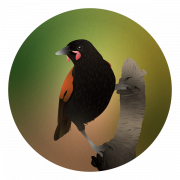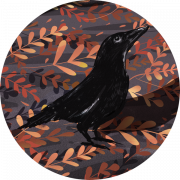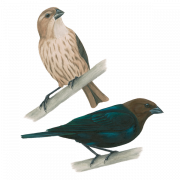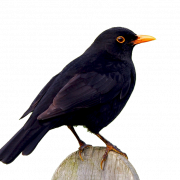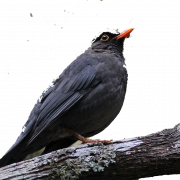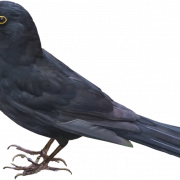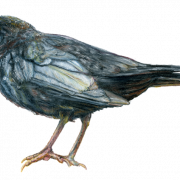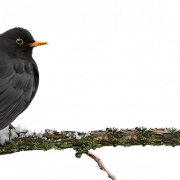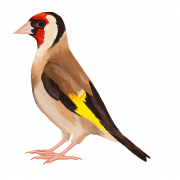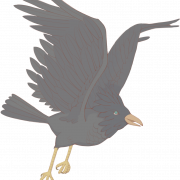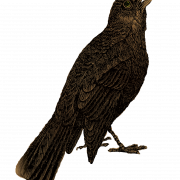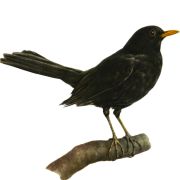Download top and best high-quality free Common Blackbird PNG Transparent Images backgrounds available in various sizes. To view the full PNG size resolution click on any of the below image thumbnail.
License Info: Creative Commons 4.0 BY-NC
Turdus merula (common blackbird) is a genuine thrush species. It’s also known as the Eurasian blackbird (particularly in North America, to distinguish it from the unrelated New World blackbirds), or simply the blackbird when there isn’t a similar-looking local species. It is found in Europe, Asiatic Russia, and North Africa, as well as Australia and New Zealand, where it has been imported.
Across its vast range, it has a multitude of subspecies; a few Asian subspecies are sometimes regarded as complete species. The common blackbird can be resident, somewhat migratory, or totally migratory, depending on latitude.
The adult male of the common blackbird (Turdus merula merula, the nominate subspecies), which may be found over much of Europe, is completely black except for a yellow eye-ring and beak and sings a rich, melodic song; the adult female and young are mostly dark brown. This species breeds in woodlands and gardens, where it constructs a tidy, cup-shaped nest with mud bindings. It eats a wide variety of insects, earthworms, berries, and fruits and is omnivorous.
On the breeding grounds, both sexes are territorial, with different threat displays, but during migration and in wintering locations, they are more sociable. Where the temperature is suitably moderate, pairs stay in their area all year. This ubiquitous and visible species has spawned a slew of literary and cultural allusions, many of which are linked to its song.
Turdus merula was the name given to the common blackbird by Carl Linnaeus in his landmark 1758 10th edition of Systema Naturae (characterised as T. ater, rostro palpebrisque fulvis). The binomial name is derived from two Latin words: turdus, which means “thrush,” and merula, meaning “blackbird,” the latter of which gives birth to the French name merle and the Scots name merl.
Turdus is a genus of around 65 species of medium to large thrushes with rounded heads, longish, pointed wings, and typically beautiful songs. The song thrush and the mistle thrush are early offshoots of the Eurasian lineage of Turdus thrushes after they moved north from Africa, whereas the blackbird is descended from ancestors who colonized the Canary Islands from Africa and then traveled north to Europe. In terms of evolution, it is closely related to the island thrush (T. poliocephalus) of Southeast Asia and the southwest Pacific islands, which split from T. merula stock just recently.
It’s not immediately obvious why this species was given the name “blackbird” in 1486, rather than one of the many other familiar black English birds like the carrion crow, raven, rook, or jackdaw. However, “bird” was primarily used for smaller or immature birds in Old English and contemporary English until around the 18th century, while bigger birds such as crows were referred to as “fowl.”
As a result, the blackbird was the only widespread and visible “blackbird” in the British Isles at the time. Until the 17th century, the species was known as ouzel, ousel, or wosel (from Old English osle, cf. German Amsel). Bottom alludes to “The Woosell cocke, so blacke of hew, With Orenge-tawny bill” in Act 3 of Shakespeare’s A Midsummer Night’s Dream. The ouzel term persisted in poetry and is now used to refer to the closely related ring ouzel (Turdus torquatus) and the unrelated but apparently similar white-throated dipper (Turdus torquatus) (Cinclus cinclus).
The white-collared blackbird (T. albocinctus) and the grey-winged blackbird (T. boulboul), both related Asian Turdus thrushes, are also known as blackbirds, while the Somali thrush (T. (olivaceus) ludoviciae) is also known as the Somali blackbird.
Download Common Blackbird PNG images transparent gallery.
- Songbird Common Blackbird PNG
Resolution: 825 × 969
Size: 416 KB
Image Format: .png
Download
- Wild Common Blackbird
Resolution: 1000 × 861
Size: 101 KB
Image Format: .png
Download
- Wild Common Blackbird PNG
Resolution: 800 × 618
Size: 279 KB
Image Format: .png
Download
- Songbird Common Blackbird Transparent
Resolution: 1280 × 1031
Size: 711 KB
Image Format: .png
Download
- Flying Blackbird PNG Image
Resolution: 640 × 480
Size: 73 KB
Image Format: .png
Download
- Flying Blackbird Transparent
Resolution: 1000 × 753
Size: 293 KB
Image Format: .png
Download
- Flying Blackbird PNG Clipart
Resolution: 3234 × 2329
Size: 157 KB
Image Format: .png
Download
- Flying Blackbird PNG Free Download
Resolution: 786 × 786
Size: 884 KB
Image Format: .png
Download
- Common Blackbird Transparent
Resolution: 800 × 518
Size: 239 KB
Image Format: .png
Download
- Common Blackbird PNG Clipart
Resolution: 1724 × 1465
Size: 91 KB
Image Format: .png
Download
- Common Blackbird PNG Free Download
Resolution: 1600 × 1599
Size: 41 KB
Image Format: .png
Download
- Wild Common Blackbird PNG Image
Resolution: 1024 × 1024
Size: 558 KB
Image Format: .png
Download
- Wild Common Blackbird Transparent
Resolution: 707 × 749
Size: 46 KB
Image Format: .png
Download
- Wild Common Blackbird PNG Clipart
Resolution: 1097 × 823
Size: 378 KB
Image Format: .png
Download
- Wild Common Blackbird PNG Free Download
Resolution: 800 × 618
Size: 240 KB
Image Format: .png
Download
- Common Blackbird PNG Free Image
Resolution: 1138 × 988
Size: 14 KB
Image Format: .png
Download
- Songbird Common Blackbird PNG Clipart
Resolution: 1024 × 897
Size: 497 KB
Image Format: .png
Download
- Songbird Common Blackbird PNG Free Download
Resolution: 1024 × 1024
Size: 954 KB
Image Format: .png
Download
- Songbird Common Blackbird PNG Picture
Resolution: 750 × 500
Size: 161 KB
Image Format: .png
Download
- Songbird Common Blackbird PNG Free Image
Resolution: 2544 × 2770
Size: 177 KB
Image Format: .png
Download
- Common Blackbird PNG Pic
Resolution: 920 × 403
Size: 22 KB
Image Format: .png
Download
- Flying Blackbird PNG Picture
Resolution: 655 × 655
Size: 29 KB
Image Format: .png
Download
- Wild Common Blackbird PNG Picture
Resolution: 1724 × 1465
Size: 72 KB
Image Format: .png
Download
- Wild Common Blackbird PNG Free Image
Resolution: 800 × 618
Size: 145 KB
Image Format: .png
Download
- Wild Common Blackbird PNG File
Resolution: 1724 × 1465
Size: 77 KB
Image Format: .png
Download
- Wild Common Blackbird PNG HD Image
Resolution: 765 × 750
Size: 149 KB
Image Format: .png
Download
- Flying Blackbird PNG Free Image
Resolution: 700 × 613
Size: 97 KB
Image Format: .png
Download
- Flying Blackbird PNG File
Resolution: 1848 × 1391
Size: 331 KB
Image Format: .png
Download
- Flying Blackbird PNG HD Image
Resolution: 1500 × 1500
Size: 85 KB
Image Format: .png
Download
- Flying Blackbird PNG Pic
Resolution: 1600 × 1136
Size: 1128 KB
Image Format: .png
Download
- Flying Blackbird PNG Download Image
Resolution: 971 × 897
Size: 53 KB
Image Format: .png
Download
- Songbird Common Blackbird PNG File
Resolution: 1724 × 1465
Size: 68 KB
Image Format: .png
Download
- Songbird Common Blackbird PNG HD Image
Resolution: 1024 × 1024
Size: 345 KB
Image Format: .png
Download
- Songbird Common Blackbird PNG Pic
Resolution: 1199 × 848
Size: 50 KB
Image Format: .png
Download
- Wild Common Blackbird PNG Pic
Resolution: 1200 × 1200
Size: 98 KB
Image Format: .png
Download
- Wild Common Blackbird PNG Download Image
Resolution: 1051 × 1002
Size: 1009 KB
Image Format: .png
Download
- Wild Common Blackbird PNG High Quality Image
Resolution: 1325 × 992
Size: 70 KB
Image Format: .png
Download
- Wild Common Blackbird PNG Images
Resolution: 1197 × 1197
Size: 666 KB
Image Format: .png
Download
- Songbird Common Blackbird PNG Download Image
Resolution: 1146 × 750
Size: 22 KB
Image Format: .png
Download
- Common Blackbird PNG Images
Resolution: 1000 × 1245
Size: 195 KB
Image Format: .png
Download
- Common Blackbird PNG Image File
Resolution: 647 × 500
Size: 64 KB
Image Format: .png
Download
- Common Blackbird PNG Photo
Resolution: 1114 × 750
Size: 33 KB
Image Format: .png
Download
- Common Blackbird PNG Image HD
Resolution: 1474 × 1474
Size: 1762 KB
Image Format: .png
Download
- Common Blackbird PNG File Download Free
Resolution: 2560 × 1829
Size: 76 KB
Image Format: .png
Download
- Flying Blackbird PNG High Quality Image
Resolution: 800 × 600
Size: 178 KB
Image Format: .png
Download
- Wild Common Blackbird PNG Image File
Resolution: 640 × 494
Size: 170 KB
Image Format: .png
Download
- Common Blackbird PNG HD Image
Resolution: 750 × 600
Size: 139 KB
Image Format: .png
Download
- Common Blackbird PNG High Quality Image
Resolution: 600 × 600
Size: 460 KB
Image Format: .png
Download
- Common Blackbird PNG0
Resolution: 600 × 600
Size: 630 KB
Image Format: .png
Download
- Songbird Common Blackbird PNG Image
Resolution: 600 × 600
Size: 293 KB
Image Format: .png
Download
- Common Blackbird
Resolution: 900 × 659
Size: 364 KB
Image Format: .png
Download
- Common Blackbird PNG Image
Resolution: 1024 × 768
Size: 649 KB
Image Format: .png
Download
- Common Blackbird PNG Picture
Resolution: 963 × 643
Size: 457 KB
Image Format: .png
Download
- Common Blackbird PNG File
Resolution: 750 × 476
Size: 349 KB
Image Format: .png
Download
- Common Blackbird PNG Download Image
Resolution: 1078 × 559
Size: 358 KB
Image Format: .png
Download
- Common Blackbird PNG Transparent HD Photo
Resolution: 800 × 618
Size: 230 KB
Image Format: .png
Download
- Common Blackbird PNG1
Resolution: 1306 × 1445
Size: 431 KB
Image Format: .png
Download
- Common Blackbird PNG
Resolution: 1087 × 791
Size: 64 KB
Image Format: .png
Download
- Flying Blackbird
Resolution: 1677 × 2048
Size: 806 KB
Image Format: .png
Download
- Flying Blackbird PNG
Resolution: 675 × 720
Size: 291 KB
Image Format: .png
Download
- Songbird Common Blackbird
Resolution: 640 × 480
Size: 173 KB
Image Format: .png
Download
